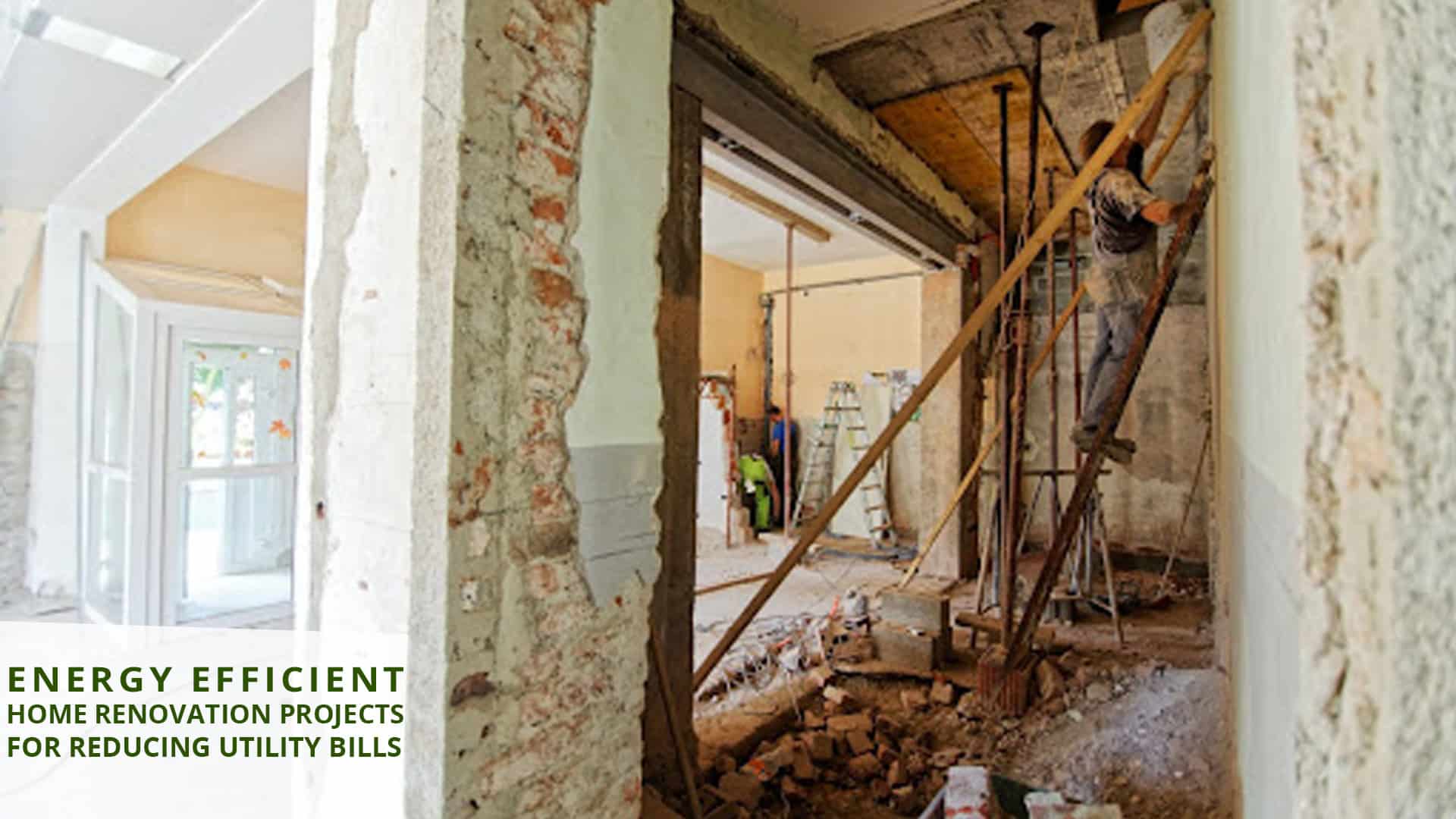By Brian Jeffries
Reducing utility bills is something any homeowner might like to do. Not only does it save you money on a month-to-month basis, but it also raises the property value of your home if you achieve your energy bill reduction via home renovation.
There are many ways to reduce your utility bills, like cutting back on your usage, for example, but this doesn’t necessarily mean you have to take shorter showers. The most effective way to reduce utility bills is by implementing energy-efficient renovations into your home.
In case you’re interested in lowering your monthly energy costs, here are some of the best projects for doing so.

1. NEW SOFFIT
Your soffit is the material used to cover the gap between your roof and your exterior walls. The material that covers the bottom of the overhang of your roof is called soffit, and it protects this overhang area known as the eave.
The eave of a home is usually left unfinished and thus covered with only a thin soffit to protect this area from the elements. If you use the right kind of soffit, it can allow a healthy amount of fresh air to flow into the attic and roof of your home, preventing mold and keeping your home a bit cooler.
Some soffit is completely solid, while other types like perforated soffit panels are filled with little holes that allow air in, keeping your home cooler during the summer and allowing you to use your A/C less often.
2. NEW WINDOW PANELS
Windows are one of the biggest culprits of wasted energy in a home. They are naturally some of the cooler areas of the home and allow heat to escape even when closed.
But, while a drafty window can usually be sealed with caulk or covered with plastic during the winter, some windows require a different solution. Especially for wooden windows that use separate panes of glass within a wooden frame, these panes often become loose, allowing a lot of heat to be lost through the gaps in the frame.
The best way to fix this without having your entire window replaced down to the studs is by using window replacement inserts. These replacement panes of glass are to be fit snugly into your frame, sealing up gaps and making your windows that much more energy-efficient.


3. UNDERFLOOR HEATING
Underfloor heating, otherwise known as radiant floor heating, has become very popular in recent years. This method of heating uses pipes heated by electricity or filled with hot water that runs beneath the entire length of a floor.
They heat the room from the bottom up, eliminating cold spots and achieving the desired temperature much faster than regular forced air from an HVAC unit would. Because it takes less usage to reach the same effect, underfloor heating is an incredibly effective renovation for improving energy efficiency.
It can also be combined with a radiant heat thermostat for tuning the temperature to your exact liking, setting a timer to heat your home when you aren’t there, and automatically shutting off the heat once ideal temperatures have been reached.
4. SPRAY FOAM INSULATION
Adding spray foam insulation to your home is another super-easy way to reduce your energy bills. Air leaks are the main culprit of less-than-stellar energy efficiency in most homes, and adding spray foam insulation is an eco-friendly project that will cost you almost nothing but could save you a decent amount on your bills each month. It also reduces noise pollution from outside and can even add strength to your home. Many air leaks are tiny and dispersed all throughout a home’s windows and walls, so using spray foam insulation is a way to really seal things up as tight as possible.


SLASH YOUR UTILITY BILLS WITH THESE INNOVATIVE HOME RENOVATIONS
It’s never been easier to reduce your utility bills and improve energy efficiency with home renovations. By implementing underfloor heating, window replacement inserts, and/or ventilated soffit panels, you can achieve a big reduction in your home’s utility bills. Not only will this save you money in the short term, but it will also net you a higher return when you decide to sell and will improve the eco-friendly rating of your home as well.
Brian Jeffries is the content director for the Innovative Building Materials blog and a content writer for the building materials industry. He is focused on helping fellow homeowners, contractors, and architects discover materials and methods of construction that save money, improve energy efficiency, and increase property value.

































Leave A Comment